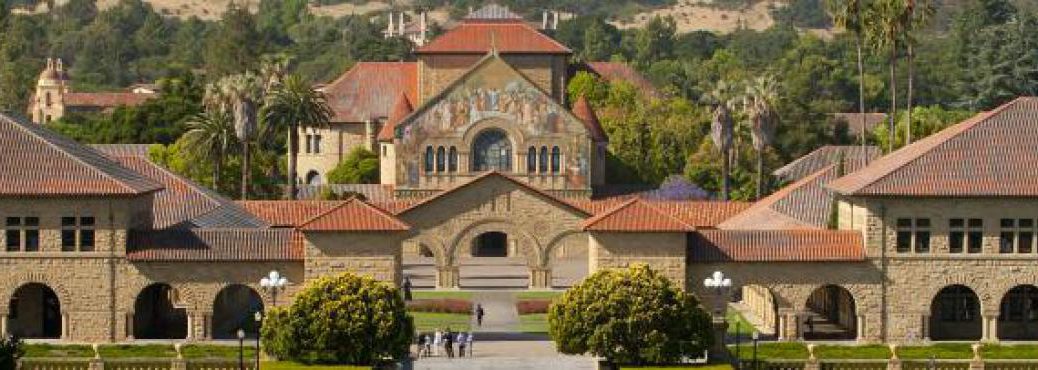Written for my 1976 B.A. Portfolio for Antioch.
Linked from Stanford overview and Colleges and trainings
1. Describe the learning setting. Include where it took place, the role of other persons who were involved with you, and any materials and methods employed which assisted your learning.
Stanford University is located in Palo Alto, California. Other people involved included teachers and fellow students. At the end of the first year a major figure was Dr. Wilfred Stone, the Faculty Resident in our dormitory (Burbank House, Lucie Stern Hall). I told him that I was very uncomfortable being at Stanford and he gave me the validation I felt I needed to honor my own feelings and leave.
When I came back in 1964 a strong influence was my philosophy professor in the introductory course, Dr. John Mothershead. I was inspired by his lecture where he listed the history of western thought as a history of parallel dichotomies. He expressed the wish that one of his students would be able to develop a system that would overcome these dualities. I also remember him saying that the intellect can only take you so far and at some point a leap of faith must be made. Both of these statements were a seed to a growth which brought me to Zen study, and psychotherapy, and this Antioch program.
Materials and methods were mostly the traditional lecture and classroom formats. For the most part I was a passive receptacle for information, feeding it back in papers and examinations. I didn’t come in contact with any creative or experimental materials or methods, although there may have been some around toward the end of my time at Stanford.
2. Describe your participation and responsibilities in this setting.
It was my first time away from home, and for the first two quarters I did just what I had always done: go to class, take notes, participate in discussions in the smaller classes, write papers, and take exams. I was trying to get good grades and keep my scholarship.
Spring quarter was different. The beautiful Northern California spring was all it took for this Los Angeles boy, never having experienced any season, to suddenly forget all academic responsibilities. After twelve years of pushing, my only concern was to have fun, and I had enough to earn two Ds and two Fs. After a year in Los Angeles, the same thing happened the next year. I did well the first two quarters, and then got all Ds and Fs the spring quarter. But this time Ken Kesey, the Acid Tests, and a whole bohemian subculture were around. I got involved with that, which set the tone for the next seven years of my life. So participation was divided between the passive student mode the first two thirds of each year and the thrill-seeker mode the last third of each year.
3. Describe new skills and/or knowledge derived from this learning activity which contribute to your Degree Plan.
Autumn and Winter quarters I completed courses in English Composition, Spanish Reading, Analytic Geometry and Calculus, History of Western Civilization, Spanish Composition, Introduction to Philosophy, Chinese Philosophy, First Year French, History of Political Thought, Late 19th and Early 20th Century Philosophy, Works of Brecht, and Russian Literature (in translation), all with a little over a B average. Spring quarters I had a low D- average.
4. Self-Assessment: Evaluate this learning activity. Mention such things as the quality of the experience itself and its personal significance to you.
Practically everybody in my freshman class had been a straight A student in high school. I don’t think any of us had very much experience of the real world with which to temper our flights of mental accomplishment. The earthy, practical quality was definitely missing.
The personal significance of the experience started with the idealism I had going in. We had been asked to read “The Aims of Education,” by Alfred North Whitehead, and I was convinced that I was entering the mainstream of the dialog of the western intellectual tradition. After a short while I started to feel more like I was at a huge playground for the overprivileged. Almost everybody seemed to be much richer than most of my friends at home had been, and they all seemed to be just playing around until they could take over the reins of their parents’ companies. I became very disillusioned with the potentiality of the university as a social critic. There wasn’t the high tone of honesty and intellectual excitement that I was hoping to find. And so I just gave up and decided to join the party in my own way. Eventually this meant dropping into the Kesey acid tests and seven years of dope and rock and roll. Only ten years later am I beginning to be able to salvage any positive feelings about the intellectual skills that I learned in battling for grades with my brainy contemporaries.
5. Describe the methods of evaluation and feedback used during the learning experience itself.
Of course there were grades and exams and midterms every quarter. The people who gave me validation for leaving the university included Dr. Stone and Dr. Paulson, university psychiatrist. After taking LSD at Big Sur, I told him I couldn’t concentrate in the classroom and needed to be outside, where I felt my only real learning would take place. He gave me the psychiatric leave of absence that I asked for, although he told me he definitely thought I wasn’t crazy, he only gave it because I asked for it.
6. Describe the material products of this learning experience, if any.
None.
7. List the forms of testimony and evaluation that you will include in your portfolio as demonstrable evidence of learning. Please attach these.
Transcript from Stanford University.
